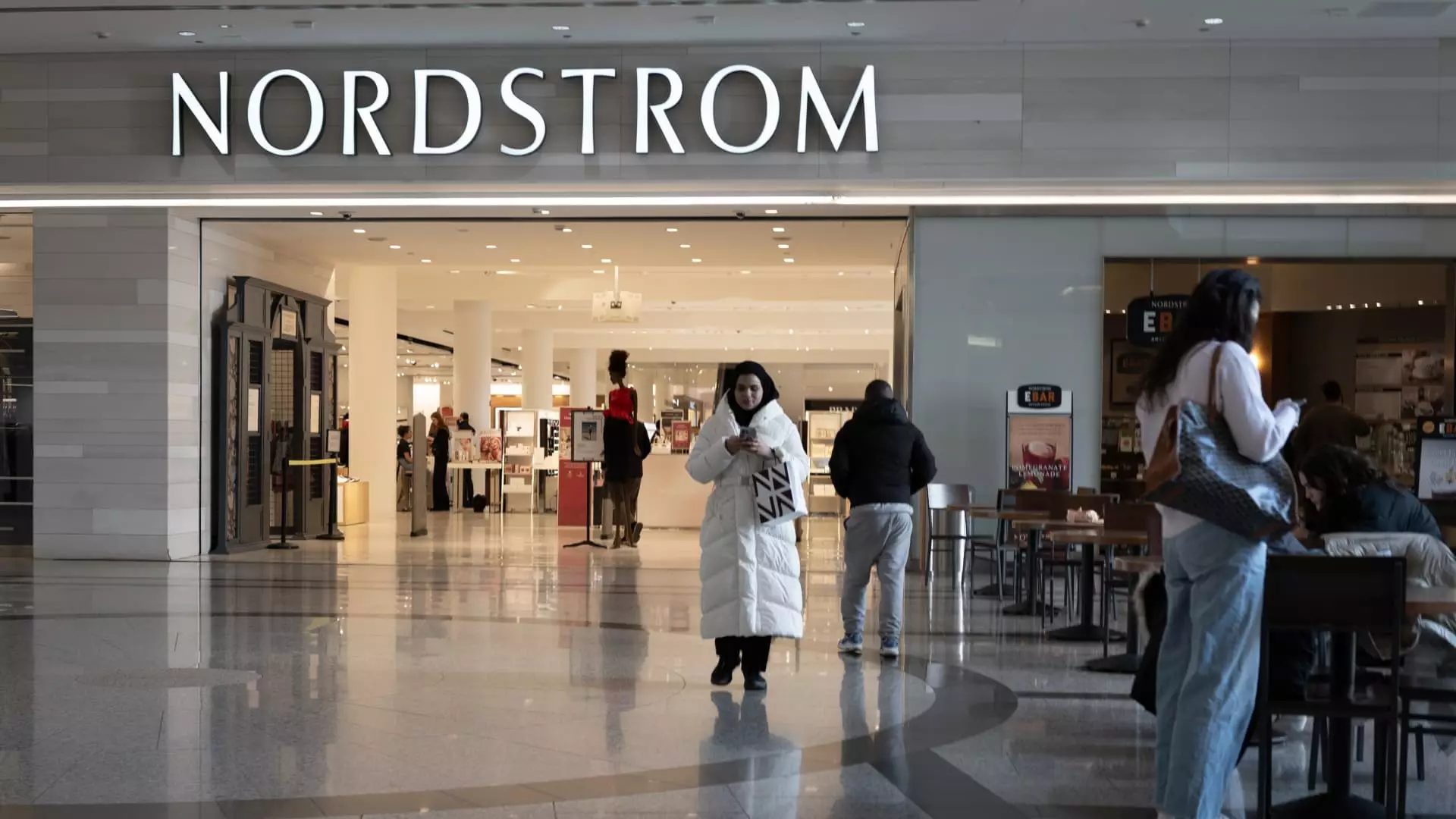In a landscape challenged by shifting consumer preferences and increased price sensitivity, Nordstrom has recently demonstrated a noteworthy resilience with its quarterly performance. The Seattle-based retailer reported approximately 4% year-over-year growth in revenue, surpassing Wall Street’s expectations. This growth was notable across both its flagship department stores and Nordstrom Rack, the off-price chain that has become integral to its strategy. Despite these promising figures, the company has opted for a cautious outlook as it heads into the competitive holiday season, illustrating the complexities of current retail dynamics.
While Nordstrom’s quarterly sales figures were robust, the company has tempered its full-year forecast, expecting revenue between flat and a modest 1% increase. This marked a slight improvement from its previous estimates, which anticipated a decline of up to 1%. The deliberate conservatism reflects not only the challenges within the retail sector but also awareness of broader economic conditions impacting consumer behavior. CEO Erik Nordstrom’s comments highlight a strategy focused on maintaining a positive customer experience while preparing for potential fluctuations in purchasing patterns, especially as the holiday shopping frenzy approaches.
Segment Performance: A Closer Look
Breaking down the performance into categories reveals some impressive gains. The sales of women’s apparel and activewear soared with double-digit growth, while shoes, men’s, and kids’ apparel also contributed positively with mid-to-high single-digit increases. These results underscore Nordstrom’s strategy of catering to selective shoppers who are likely to spend on quality and experience rather than just price. However, a note of caution emerged from the company’s earnings call, where Erik Nordstrom indicated a decline in sales trends toward the end of October, which he included in the company’s holiday expectations.
Critical Comparisons: Battling Market Pressures
Nordstrom’s performance should be seen within the broader context of the retail industry’s current struggles. Other major retailers like Walmart, Best Buy, and Target have also reported selective buying behaviors among consumers. Shoppers are increasingly discerning about luxury and discretionary items, tightening their belts in light of economic uncertainty. Nordstrom, however, managed to post a 4% increase in comparable sales across its brands, significantly exceeding analysts’ expectations of a mere 0.7% gain. This difference illustrates not only effective management but also a relevant selection strategy amidst competitive pressures.
An interesting factor that influenced Nordstrom’s sales figures is the calendar shift concerning its popular Anniversary Sale. This year, the sale contained fewer promotional days, which resulted in a projected negative impact of about 1% on net sales. Such shifts underscore the challenges retailers face in maintaining consistency in revenue generation amidst changing promotional schedules. Nevertheless, Nordstrom’s ability to leverage its marketing events successfully amidst these shifts reveals a nuanced understanding of consumer engagement.
The growth of digital sales by 6.4% year over year highlights an important trend that reflects consumers’ increasing preference for online shopping. E-commerce now accounts for about a third of Nordstrom’s total sales, indicative of a robust digital strategy. The implementation of improved website features, coupled with a broader assortment of affordable priced items, has likely driven this growth. Furthermore, Nordstrom is expanding its physical footprint through the addition of new Nordstrom Rack stores—23 have been launched so far this year, aligning with its target of 20 to 25 new locations annually.
As of the latest reports, Nordstrom’s stock has appreciated by 32% this year, outpacing the S&P 500’s 26% gains, reflecting market confidence in the company’s trajectory. This positivity is further emphasized by a recent bid from the founding family to take the company private, suggesting a belief in the potential for long-term growth outside of public scrutiny. The retail landscape remains complex, and Nordstrom must navigate these variables with strategic adaptability as it heads into potentially turbulent consumer spending seasons.
Nordstrom’s quarterly results tell a story of cautious optimism blended with strategic maneuvering in a challenging retail environment. The company’s focus on customer experience, targeted merchandising, and digital growth positions it well as it prepares for the crucial holiday season. Nonetheless, the visible market pulse and emerging economic conditions mean that careful navigation will remain paramount for enduring success.

